QuestionI am currently setting up a 60 gal hex african cichlid tank. I plan on putting 8-10 africans, 2-3 green spot/figure eight puffers, and maybe an eel or a couple of snails. My rock work will be completely holey rock {honeycomb limestone} and sand for substrate. Undecided on plants at this time. I don't want to put an "ugly" pleco in this tank, so my question is, what are good options giving the enviroment, that I can put in this tank to control algae growth? Thanks for your time in helping me make this decision!!!
AnswerGood morning Jay,
Wow! It sounds like you have an eye for oddballs but also appreciate the colors of Malawi cichlids? That's what most folks have in mind when they mention African cichlids. Before I go further, let me caution you against puffers.
While I am not a puffer expert (like Jeni Tyrell, Pufferpunk at wetwebmedia.com and thepufferforum.com) I do know a thing or two about puffers. At least, I seem to know more than many local fish stores around here, who insist on housing puffers improperly. Most puffers are brackish fish, and out of those a few ought to graduate to saltwater when mature. Much like the equally misunderstood Columbian sharks...
The two species you have mentioned are vastly different. A green spotted puffer grows to 6" and becomes extremely aggressive as it matures. A fascinating puffer for sure, but best kept alone, and in high-end brackish water, saltwater as an adult. A figure eight puffer prefers low-end brackish water (although some aquarists raise them successfully in freshwater) and grows to half the size of a GSP. It is also not as aggressive, so it's a better choice for your tank although still not, truly, the soundest choice. Dwarf puffers are truly freshwater species. They are also known as pea puffers, because they stay tiny - about 1"! These are the most compatible in terms of water conditions to your tank, but I sill wouldn't keep them with cichlids for fear that they eventually would be a fleshy treat...
That's the other side of puffers. They bite! They relish live foods but can be trained to accept dead foods naturally found in the sea such as scallops, mussels, cockles - crunchy foods wear down their teeth, which is desirable. They also can be weaned onto frozen aquarium foods such as krill, glassworms, bloodworms, daphnia - avoid brine shrimp and offer mysis, much more nutritious. Here's more:
http://www.thepufferforum.com/forum/library/feeding/feeding-your-puffers
All right, now that I have that out of the way, let's talk about the possibility of an eel. Again, I profess to be no expert on these, all I can tell you is I've read many discouraging tales about eels kept in improper setups that succumbed to infection from being in the wrong water conditions (FW instead of BW or vice versa) with or without the wrong substrate. Feeding can also be an issue since these can be difficult to train to accept prepared foods and many are nocturnal feeders. Again, we have the same trouble with improper housing at the LFS and misinformation. We even have trouble with taxonomy, as some eels are actually bichirs (such as the dinosaur eel) and "spiny eels" actually can mean any number of creatures! Start reading here:
http://fish.mongabay.com/mastacembelidae.htm
And once you figure out just the eel you have in mind, use Google to research their care requirements.
Phew! Now about the algae. It's hard for me to answer this question, because I have a 55 gallon African cichlid tank with one elderly algae eater (a golden Chinese Algae Eater that was one of my first fish) and I can tell you that this is one tank that never has a problem with algae. I don't have lights bright enough for plants (I have 2x 18" bulbs) so the algae isn't plentiful, but what grows on the grassy fake plants or on the lava rock, the cichlids gladly pick at. They do a much better job cleaning the tank than the algae eater, in fact. My other tanks have otocinclus or bristlenose plecs to keep algae at bay, and my betta 5 gallon tank has a variety of snails, but the cichlid tank stays virtually algae-free because of the constant grazing. Grazing green algae comes naturally to African cichlids!
It's important to note that green algae is the only kind of algae that is desirable. Brown algae is common in new tanks that are unbalanced yet, or older tanks in which the lights have become dim or overfeeding/overstocking is causing high nutrient levels. In any case, green algae is an indicator of tank health, whereas brown algae is not - luckily, brown algae usually doesn't persist if the problems are addressed. There are fish that will purportedly eat this, such as Siamese Algae Eaters (SAE) however I haven't witnessed this. All fish know that green algae is the tasty stuff!
Snails have a reputation for being effective algae eaters, but the apple snail is the pleco of the algae-eating world. They grow very large (baseball sized at full maturity) and produce lots of waste. As one writer in a magazine once put it, the best you can hope for is zipper like trails through the algae. Malaysian trumpet snails are effective algae eaters and aerators of sandy substrate, however a single snail produces clones (reproduces asexually) so this may not be desirable to you. Puffers generally eat snails, by the way - their ability to stamp out a snail infestation is probably their #2 claim to fame, with the dwarf/pea puffer's "cuteness" probably being the #1. But I digress...
If you are looking for interest, primarily, and secondarily, an algae-eater to supplement the natural grazing tendencies of your cichlids, look to the following loaches. (This is not a naturally occurring combination, but a biotope-type presentation doesn't seem to be what you're after.)
http://www.loaches.com/species-index/beaufortia-kweichowensis
http://www.loaches.com/species-index/pseudogastromyzon-fasciatus
Again, type the scientific (or even common name) into Google to learn more about each species. These two species are more commonly found at pet or local fish stores.
More generally, there is the article that's linked below:
http://www.loaches.com/articles/hillstream-loaches-the-specialists-at-life-in-th...
Good luck finding them!
Take care, feel free to write again.
Nicole
P.S. Do check out the following site about cichlids:
http://www.cichlid-forum.com

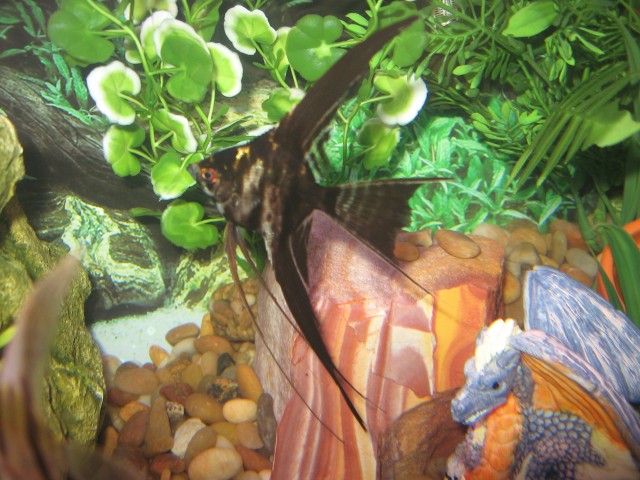 Room for more?
QuestionQUESTION: I got a little carried away last nigh
Room for more?
QuestionQUESTION: I got a little carried away last nigh
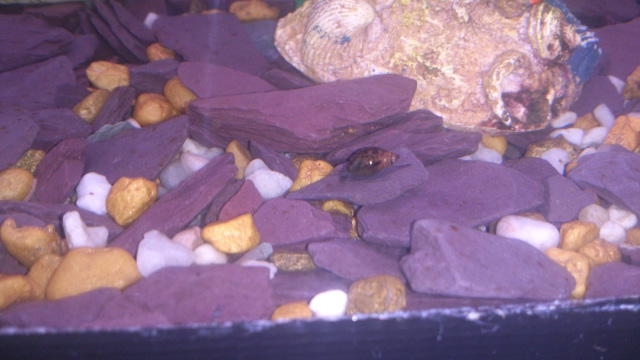 snails
Question
snail
Hi
I have recently set up my aqua
snails
Question
snail
Hi
I have recently set up my aqua
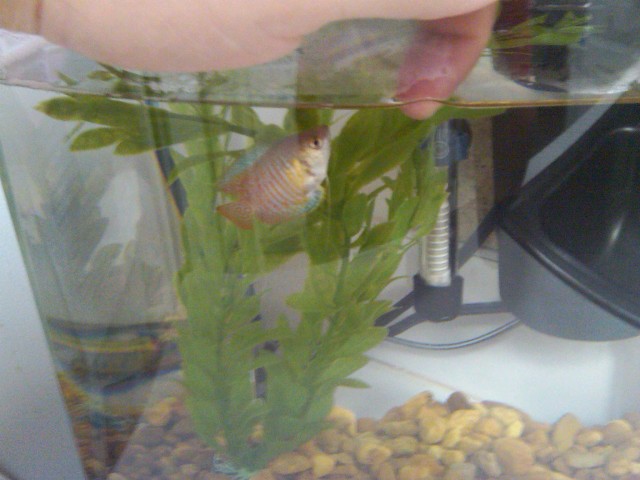 another question, and thanks for your help
QuestionQUESTION: Hi, Renee. I wanted to thank yo
another question, and thanks for your help
QuestionQUESTION: Hi, Renee. I wanted to thank yo
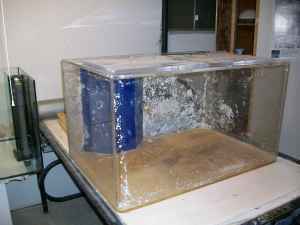 Drilled tank ?
Question
75 gallon acrylic
Hello, and thanks for answer
Drilled tank ?
Question
75 gallon acrylic
Hello, and thanks for answer
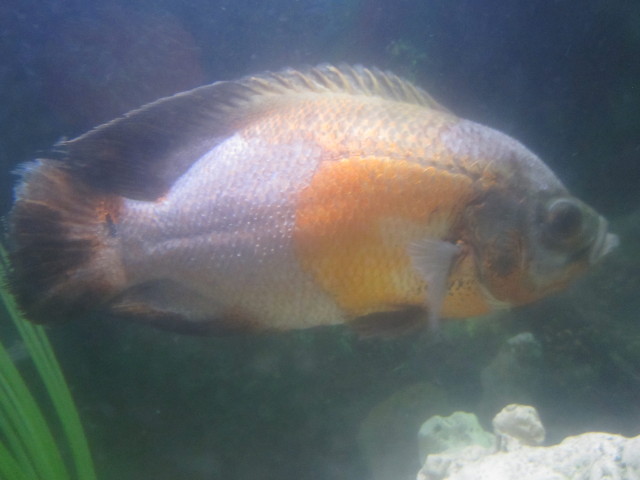 sick tiger oscar
Questionsick tiger oscar
QUESTION: Hi! I have a
sick tiger oscar
Questionsick tiger oscar
QUESTION: Hi! I have a